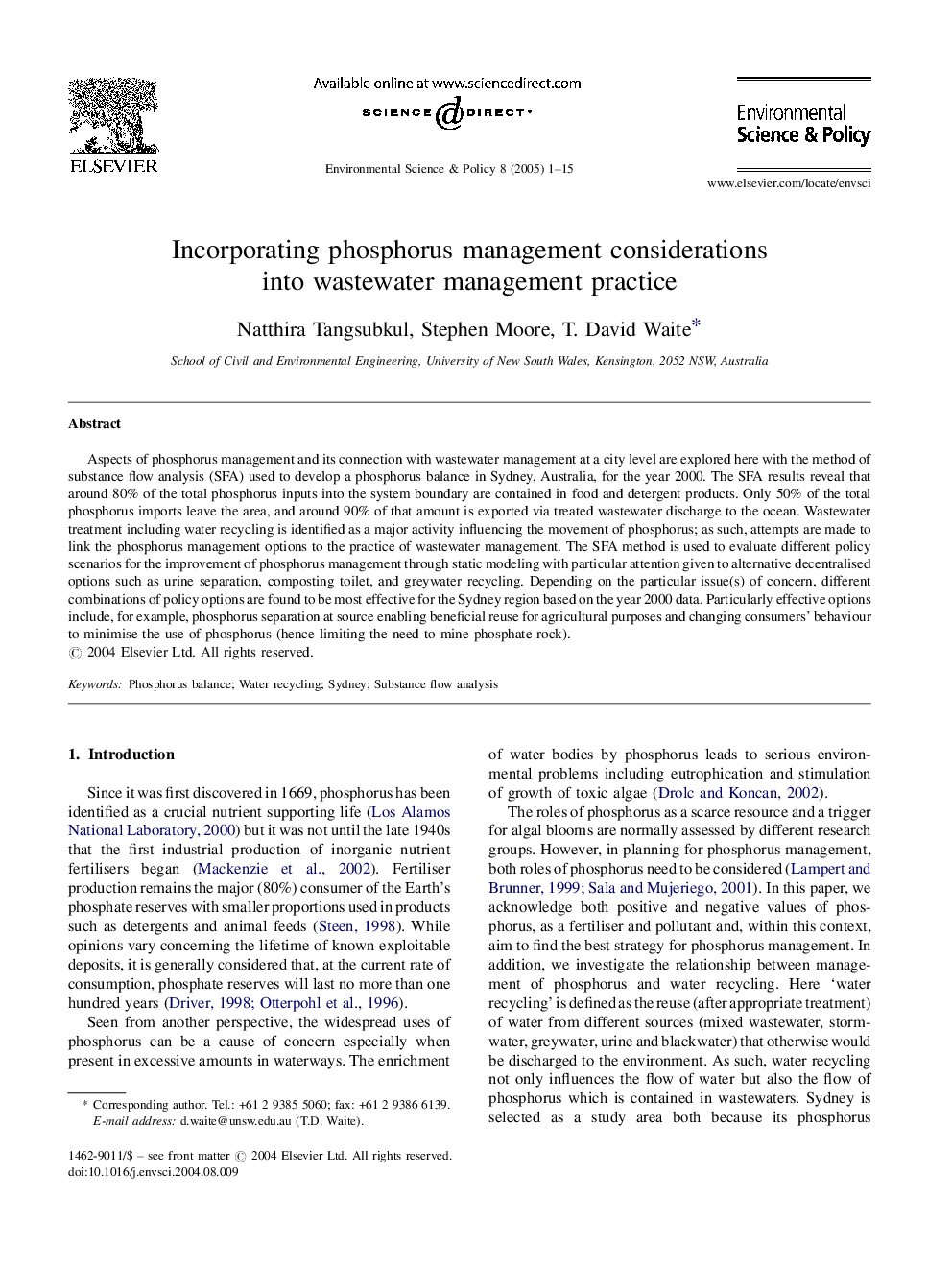| Article ID | Journal | Published Year | Pages | File Type |
|---|---|---|---|---|
| 10504627 | Environmental Science & Policy | 2005 | 15 Pages |
Abstract
Aspects of phosphorus management and its connection with wastewater management at a city level are explored here with the method of substance flow analysis (SFA) used to develop a phosphorus balance in Sydney, Australia, for the year 2000. The SFA results reveal that around 80% of the total phosphorus inputs into the system boundary are contained in food and detergent products. Only 50% of the total phosphorus imports leave the area, and around 90% of that amount is exported via treated wastewater discharge to the ocean. Wastewater treatment including water recycling is identified as a major activity influencing the movement of phosphorus; as such, attempts are made to link the phosphorus management options to the practice of wastewater management. The SFA method is used to evaluate different policy scenarios for the improvement of phosphorus management through static modeling with particular attention given to alternative decentralised options such as urine separation, composting toilet, and greywater recycling. Depending on the particular issue(s) of concern, different combinations of policy options are found to be most effective for the Sydney region based on the year 2000 data. Particularly effective options include, for example, phosphorus separation at source enabling beneficial reuse for agricultural purposes and changing consumers' behaviour to minimise the use of phosphorus (hence limiting the need to mine phosphate rock).
Related Topics
Physical Sciences and Engineering
Energy
Renewable Energy, Sustainability and the Environment
Authors
Natthira Tangsubkul, Stephen Moore, T. David Waite,
